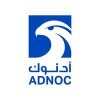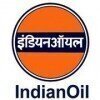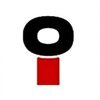Filter interviews by
Saudi Aramco Piping Inspector Interview Questions and Answers
Saudi Aramco Piping Inspector Interview Experiences
1 interview found
I applied via Newspaper Ad and was interviewed in Apr 2023. There were 2 interview rounds.
Regarding fit up,hydro test
(1 Question)
- Q1. What is lay-up in plant piping
- Ans.
Lay-up in plant piping refers to the process of preserving or protecting the piping system during periods of inactivity or shutdown.
Lay-up involves cleaning and draining the piping system to prevent corrosion and contamination.
Various methods of lay-up include nitrogen purging, dry lay-up, and wet lay-up.
Examples of lay-up techniques include using desiccants, inhibitors, or protective coatings to maintain the integrity...
Top trending discussions






Interview questions from similar companies

(3 Questions)
- Q1. General introduction and technical questions
- Q2. Asked me to explain about me
- Q3. Previous experience and challenges faced

I applied via Naukri.com and was interviewed in Feb 2024. There were 2 interview rounds.
Question answer related piping job ,material related, manpower handling etc...
(5 Questions)
- Q1. Piping related question, Piping material astm code
- Q2. Types of piping drawing
- Ans.
Types of piping drawings include Piping and Instrumentation Diagrams (P&IDs), Isometric drawings, and Orthographic drawings.
Piping and Instrumentation Diagrams (P&IDs) show the piping system along with instruments and control devices.
Isometric drawings show the 3D representation of the piping system.
Orthographic drawings show the top, front, and side views of the piping system.
- Q3. Difference b/w construction and fabrication drawing?
- Ans.
Construction drawings show how a structure will be built, while fabrication drawings provide detailed instructions for manufacturing individual components.
Construction drawings focus on overall structure layout and dimensions
Fabrication drawings provide detailed instructions for manufacturing individual components
Construction drawings are used by contractors on site, fabrication drawings are used by manufacturers in wo...
- Q4. Piping material code ?
- Ans.
Piping material code refers to the standards and specifications used for selecting materials for piping systems.
Piping material codes are used to ensure the proper selection of materials based on factors like pressure, temperature, and fluid being transported.
Common piping material codes include ASME B31.3 for process piping, ASTM for materials specifications, and API for oil and gas piping.
These codes provide guidelin...
- Q5. Difference b/w pipe and tubes
- Ans.
Pipes are used to transport fluids or gases, while tubes are used for structural applications or heat transfer.
Pipes are measured by their inside diameter, while tubes are measured by their outside diameter.
Pipes are typically round in shape, while tubes can be round, square, or rectangular.
Pipes are commonly used in plumbing, HVAC systems, and oil and gas industries, while tubes are used in construction, automotive, a
Interview Preparation Tips
- Piping
- Statatic Equipment


(5 Questions)
- Q1. Work experience, country name, types of work, manpower handling etc
- Q2. Punjlloyd ltd ,brouge 2 project,abudhabi
- Q3. Allkulaib int kuwait ,subiya power plant
- Q4. Dyam punjlloyd ,saudi arabia ,satrop projects
- Q5. Towell eng, oman orpic (srip extension projects)
Manpower nhandling only
Interview Preparation Tips

I applied via Naukri.com and was interviewed in Nov 2022. There were 2 interview rounds.

(13 Questions)
- Q1. How much carbon percentage in Carbon Steel
- Ans.
The carbon percentage in carbon steel varies from 0.05% to 2.0% depending on the grade.
Carbon steel is an alloy of iron and carbon.
The amount of carbon in carbon steel determines its strength and hardness.
Low carbon steel contains less than 0.3% carbon, while high carbon steel contains more than 0.6% carbon.
Some common grades of carbon steel and their carbon percentage are: A36 (0.26%), 1018 (0.18%), and 1045 (0.45%).
- Q2. What is difference between concentric and eccentric reducer
- Ans.
Concentric reducers have a common centerline while eccentric reducers have an offset centerline.
Concentric reducers are used in vertical piping systems to prevent accumulation of air pockets.
Eccentric reducers are used in horizontal piping systems to prevent accumulation of solids or liquids.
Concentric reducers are symmetrical while eccentric reducers are not.
Concentric reducers are easier to manufacture and install th
- Q3. Which reinforcement fittings used in piping
- Ans.
Reinforcement fittings are used to strengthen and support piping systems.
Common reinforcement fittings include tees, elbows, reducers, and couplings.
Telescoping fittings are used to adjust the length of piping systems.
Flange fittings are used to connect pipes to other equipment or structures.
Saddles are used to support piping systems on walls or ceilings.
Reinforcement fittings can be made of various materials, includin...
- Q4. Why elbo let used in piping
- Ans.
Elbow lets change the direction of flow in piping system.
Elbows are used to change the direction of flow in a piping system.
They come in different angles such as 45°, 90° and 180°.
They are available in different materials such as PVC, copper, steel, etc.
Elbows can be welded or threaded onto the piping system.
They are commonly used in plumbing, HVAC, and industrial piping systems.
- Q5. If we have to replace bypass valve on top of vessel and plant is running, then how to replace that valve ??
- Ans.
The bypass valve can be replaced by isolating the vessel, depressurizing it, and then replacing the valve.
Isolate the vessel by closing the inlet and outlet valves
Depressurize the vessel by venting the gas or liquid
Remove the old valve and install the new one
Repressurize the vessel and open the inlet and outlet valves
- Q6. What is Permit to work
- Ans.
Permit to work is a formal written system used to control high-risk activities.
It is a document that outlines the work to be done and the hazards associated with it.
It is used to ensure that all necessary safety precautions are taken before work begins.
It is issued by a competent authority and must be signed by all parties involved in the work.
Examples include hot work permits, confined space permits, and excavation pe
- Q7. Tell me about yourself and your experience
- Q8. What is isolation and how many types of isolation
- Ans.
Isolation is the process of separating a system or equipment from its energy source to ensure safety during maintenance or repair.
Isolation involves disconnecting a system or equipment from its power source, locking it out, and tagging it to prevent accidental re-energization.
There are two types of isolation: electrical isolation and mechanical isolation.
Electrical isolation involves disconnecting the electrical supply...
- Q9. What is positive isolation
- Ans.
Positive isolation is the process of completely isolating a section of a system to prevent any flow or transfer of material.
Positive isolation is achieved by using valves, blinds, or other physical barriers to completely block the flow of material.
It is important for safety and maintenance purposes, as it allows workers to safely perform tasks without the risk of exposure to hazardous materials.
Examples of positive iso...
- Q10. How to do positive isolation
- Ans.
Positive isolation is the process of completely isolating a section of piping or equipment from the rest of the system to perform maintenance or repairs.
Identify the section of piping or equipment that needs to be isolated
Close all valves and block all lines leading to and from the section
Use blind flanges or spectacle blinds to physically block the section
Ensure that the isolation is secure and pressure tested before ...
- Q11. When we do nitrogen purging and why it's required
- Ans.
Nitrogen purging is done to remove impurities and oxygen from pipelines before commissioning or maintenance work.
Nitrogen purging is done to create an inert atmosphere inside the pipeline to prevent explosions or fires.
It is required before commissioning or maintenance work to remove impurities and oxygen from the pipeline.
Nitrogen purging is also done to prevent corrosion and contamination of the pipeline.
It is common...
- Q12. What is difference between pipe and tube
- Ans.
Pipes are used to transport fluids and gases, while tubes are used for structural purposes.
Pipes have a standardized outer diameter and wall thickness, while tubes have a standardized inner diameter and wall thickness.
Pipes are typically round, while tubes can be round, square, or rectangular.
Pipes are often used in plumbing and HVAC systems, while tubes are used in construction and engineering applications.
Pipes are u...
- Q13. Which pipe material or standard used in past experience
- Ans.
I have experience working with various pipe materials and standards including carbon steel, stainless steel, and PVC.
I have worked with carbon steel pipes in a power plant project.
I have also worked with stainless steel pipes in a pharmaceutical plant project.
In a water treatment plant project, I have worked with PVC pipes.
I am familiar with ASME B31.3, API 5L, and ASTM standards for pipe materials and welding procedur
Interview Preparation Tips

Interview Questionnaire
4 Questions
- Q1. How many type gasket
- Ans.
There are several types of gaskets used in piping engineering.
There are different types of gaskets based on their material composition, such as rubber gaskets, metal gaskets, and non-metallic gaskets.
Gaskets can also be classified based on their shape, including spiral wound gaskets, ring joint gaskets, and solid gaskets.
Each type of gasket has its own specific application and sealing properties.
For example, rubber gas...
- Q2. How many type of piping
- Ans.
There are several types of piping used in various industries.
Process piping
Utility piping
Hygienic piping
High-pressure piping
Low-pressure piping
Underground piping
Aboveground piping
- Q3. What is welding filar
- Ans.
Welding filar is a type of welding wire used in the welding process.
It is a consumable wire electrode used in welding.
It is made of various materials such as stainless steel, aluminum, and copper.
The wire is fed through a welding gun and melted to join two metal pieces together.
The size and type of welding filar used depends on the type of metal being welded and the welding process being used.
- Q4. What is flare system.
- Ans.
A flare system is a safety device used in refineries and chemical plants to burn off excess gases and prevent explosions.
Flare systems are used to burn off excess gases that cannot be processed or stored.
They are designed to prevent explosions by safely disposing of flammable gases.
Flare systems are typically used in refineries, chemical plants, and oil rigs.
They consist of a tall stack with a burner at the top, which ...

I applied via Recruitment Consultant and was interviewed in Feb 2021. There was 1 interview round.
Interview Questionnaire
2 Questions
- Q1. What is different between iso and P&ID diagram. What's codes of cs, ss and it's fitted codes.
- Ans.
ISO and P&ID diagrams are different in terms of their purpose and level of detail. CS and SS have different material codes and fittings.
ISO diagrams show the physical layout of piping systems, while P&ID diagrams show the process flow and equipment
ISO diagrams provide more detailed information about pipe routing, dimensions, and supports
CS stands for Carbon Steel and has material code CS, while SS stands for Stainless ...
- Q2. How many types of flange. What is the function of valves and types of valve.
- Ans.
There are several types of flanges used in piping systems. Valves are used to control the flow of fluids and gases.
Types of flanges include weld neck, slip-on, socket weld, threaded, and blind flanges.
Valves are used to start, stop, or regulate the flow of fluids or gases in a piping system.
Types of valves include gate, globe, ball, butterfly, and check valves.
Gate valves are used to start or stop the flow of fluids, g...
Interview Preparation Tips
No fears should be before interview.

Piping Supervisor Interview Questions & Answers
Doha Petroleum Construction Companyposted on 10 Jan 2023
I applied via Company Website and was interviewed before Jan 2022. There were 2 interview rounds.

(2 Questions)
- Q1. Safety,material code,
- Q2. Public dealing,work load, progress
Interview Preparation Tips
- Safety and piping realeted
- Coding

Senior Piping Engineer Interview Questions & Answers
Reliance Industriesposted on 16 Feb 2024
I applied via Recruitment Consulltant and was interviewed in Aug 2023. There were 2 interview rounds.
(1 Question)
- Q1. About your self? Past experience? Language fluency? CTC details? Current company details? Refference contact?
(2 Questions)
- Q1. Explain your relevant experience? Piping codes and standards? Piping components? About P&ID, GA, 3D and Isometrics? Types of piping? Hydrotest procedures? About Re - instatement? About Valves? Orifice and ...
- Q2. Grp & Gre Pipes & lamination? CS,LTCS, SS & ALLOY codes and material composition? About Re- instatement? Procedures for fabricated spools Inspection? Welding procedures? How to check pipeline fit up and al...
Interview Preparation Tips
First they want know our technical knowledge like piping components, codes, specifications, Piping related drawings, welding procedures, hydrotest, piping process and procedures.
As as senior piping engineer, we should know about Piping fabrication, pre - assembly, erection, fit-up, allignment, welding, supports, hydrotest, Re- instatement and commissioning.
Apart from this, capability of manpower handling, communication, attitude and appearance should be noted.


(4 Questions)
- Q1. Saudi aramco engineering standards.
- Ans.
Saudi Aramco Engineering Standards are guidelines and specifications used in engineering projects for Saudi Aramco.
Saudi Aramco Engineering Standards cover various aspects of engineering design, materials, construction, and operation.
These standards ensure consistency, quality, and safety in all engineering projects undertaken by Saudi Aramco.
Examples of areas covered by the standards include piping design, electrical ...
- Q2. Design related discussions
- Q3. Safe practices in design
- Ans.
Safe practices in design involve considering potential hazards, following regulations, and prioritizing safety.
Identify potential hazards in the design process
Follow industry regulations and standards for safety
Prioritize safety over cost or convenience
Regularly review and update safety protocols
Include safety features in the design, such as emergency shut-off valves
Consider environmental impact and sustainability in d
- Q4. Quality of deliverables
- Ans.
Quality of deliverables is crucial for successful project completion.
Ensuring accuracy and completeness of drawings and documents
Adhering to project specifications and standards
Regularly reviewing and revising deliverables to meet client requirements
Seeking feedback from stakeholders to improve quality
Using software tools effectively to enhance deliverables
Maintaining clear communication with team members for consisten
Interview Preparation Tips
Skills evaluated in this interview
Saudi Aramco Interview FAQs
Tell us how to improve this page.
Saudi Aramco Interviews By Designations
- Saudi Aramco Safety Officer Interview Questions
- Saudi Aramco Assistant Manager Safety Interview Questions
- Saudi Aramco Building Inspector Interview Questions
- Saudi Aramco Company Secretary Interview Questions
- Saudi Aramco DCS Panel Operator Interview Questions
- Saudi Aramco Documentation Executive Interview Questions
- Saudi Aramco Driller Interview Questions
- Saudi Aramco Engineer Interview Questions
- Show more
Interview Questions for Popular Designations
- Piping Engineer Interview Questions
- Piping Designer Interview Questions
- Piping Supervisor Interview Questions
- Piping Design Engineer Interview Questions
- Piping Foreman Interview Questions
- Senior Piping Engineer Interview Questions
- Mechanical Piping Engineer Interview Questions
- Piping Stress Engineer Interview Questions
- Show more
Saudi Aramco Piping Inspector Interview Process
based on 1 interview
Interview experience
Interview Questions from Similar Companies
|
Project Engineer
23
salaries
| ₹24.5 L/yr - ₹52.2 L/yr |
|
Mechanical Engineer
14
salaries
| ₹4.9 L/yr - ₹19.2 L/yr |
|
Safety Officer
13
salaries
| ₹4 L/yr - ₹12 L/yr |
|
Maintenance Planner
13
salaries
| ₹15.5 L/yr - ₹43.7 L/yr |
|
Safety Engineer
11
salaries
| ₹2.5 L/yr - ₹13.2 L/yr |

Reliance Industries

Indian Oil Corporation

Bharat Petroleum

Hindustan Petroleum
- Home >
- Interviews >
- Saudi Aramco Interview Questions >
- Saudi Aramco Piping Inspector Interview Questions













